October is National Ergonomics Month so I thought I would take this opportunity to do a deep dive on what ergonomics is and provide practical tips to create an environment that supports our health and well-being. A little insight on me, I have my bachelor's degree in Kinesiology so I geek out on this stuff.
Ergonomics is the science of designing the workplace to optimize human well-being and overall performance. A third of our day is spent at work which post-pandemic looks slightly different for every individual. I am definitely guilty of sitting criss-cross applesauce with a dog in my lap and my computer on a coffee table on my WFH days (it’s no wonder I wake up feeling like I’m 32 going on 62). But truly, if we spend one-third of our days working—which equates to about 90,000 hours over an average lifetime—why not try to create an environment that supports our bodies? After all, we only get one.
It seems like a no-brainer to me. Investing in an ergonomic workplace means the employees feel better physically, which would increase productivity, decrease inefficiencies, and lead to happier, healthier employees. There are plenty of studies that back up my logic. Just to cite a few…
- A study published in the "Journal of Occupational and Environmental Medicine" found that companies that invested in ergonomic interventions reported a median productivity increase of 17%.
- According to a report by the International Journal of Environmental Research and Public Health, the use of sit-stand desks can lead to a 46% increase in productivity compared to colleagues in a standard fixed-height desk… FORTY SIX PERCENT!
Increasing my productivity by 17% is like adding an hour and a half to my day. Shout out to all my peeps who agree there’s not enough time in the day! There are some basic principles to follow to create a more ergonomic workspace. Start with a task chair, height-adjustable desk, keyboard tray, monitor arm, proper lighting, and a soft mat for standing.
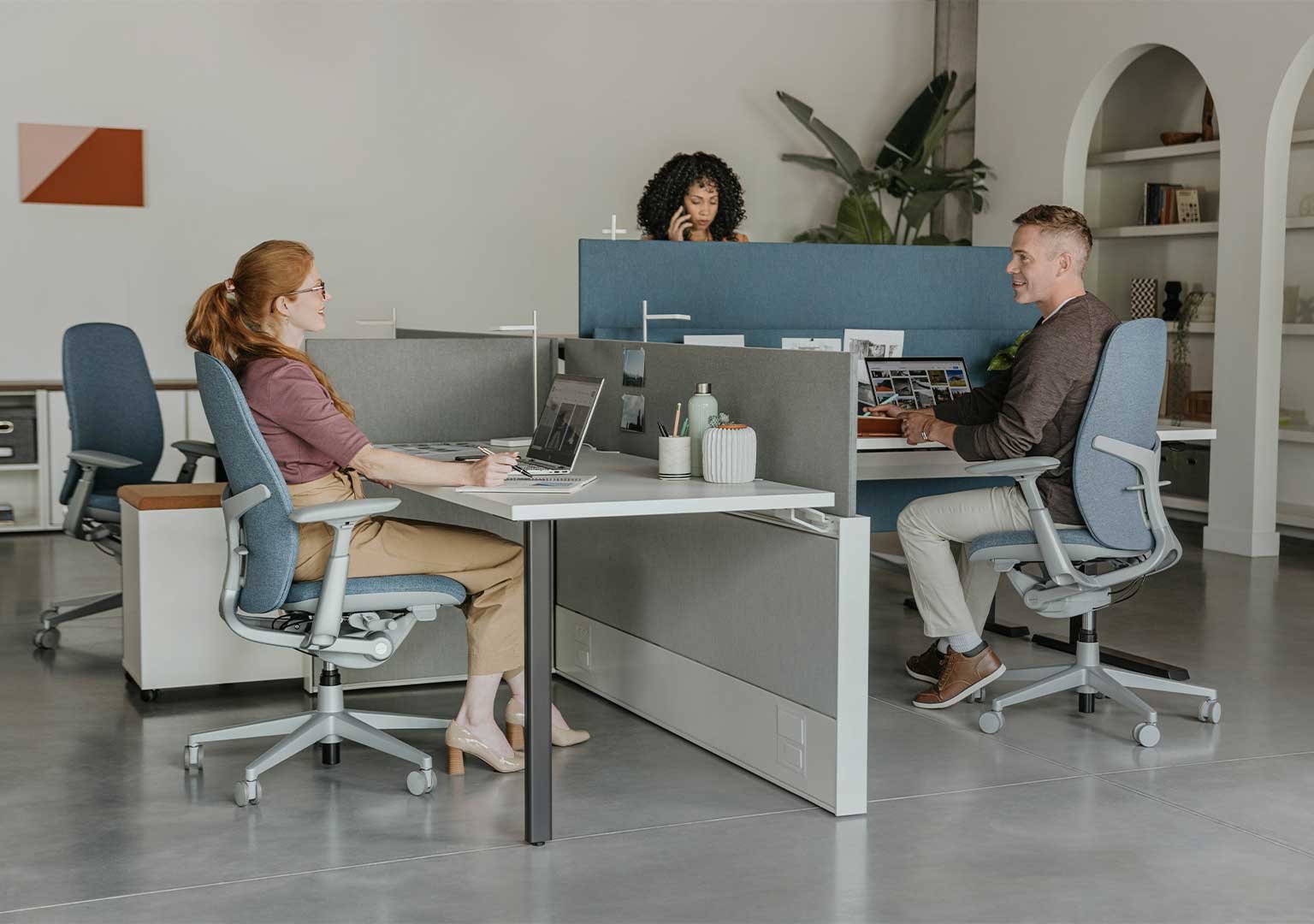
The Task Chair
It’s not just about having a great ergonomic chair, although that makes a big difference. Each body type will find one chair more comfortable than another. Once you find a chair that works for you, you’ll need to follow a few steps to make sure you’re using the chair correctly. No, criss-cross applesauce here either.
- Adjust the seat height so that your knees are at a 90-degree angle and your feet are flat on the floor.
- Slide the seat forward or back so that you have about two or three fingers space between the back of your knee and the edge of the seat pan.
- Adjust the lumbar support to support the natural C-curve in your back
- Set the back tilt tension to support your natural curvature
- Adjust the armrest height so that your forearms are parallel to the ground
- If your chair has a seat tilt, adjust so that your hips and thighs are comfortable.
My personal favorite chair right now is the Zody LX. The Zody is the first and only chair backed by the Physical Therapy Association, and for good reason. As a chronic “percher”, the dual posture (seat tilt) option keeps my back fully supported even when I sit on the edge of my desk.
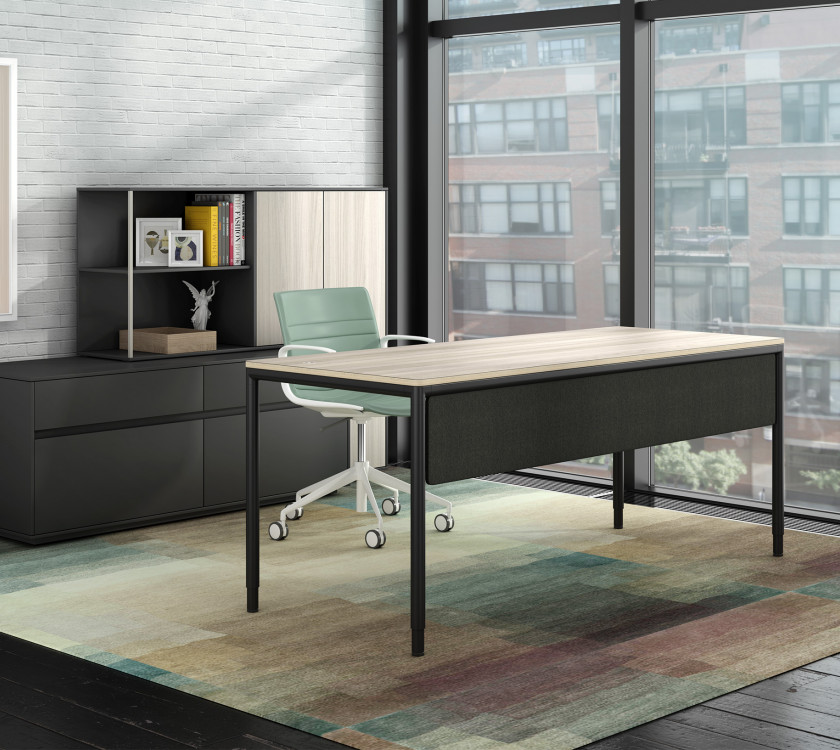
Height Adjustable Desk
AKA a sit-to-stand desk, allows the user to work from a standing posture. There is a long list of benefits to having a height-adjustable desk, but the ones I notice the most are increased alertness, increased blood flow, and reduced back pain. I used to run to the coffee machine at the first sign of fatigue but now my initial thought is to get out of my chair and stand for a bit.
There’s no shortage of height-adjustable desks on the market, my current favorite is the C9 by Watson. The desk design is clean and simple, you’d hardly even know it has sit-to-stand capabilities.
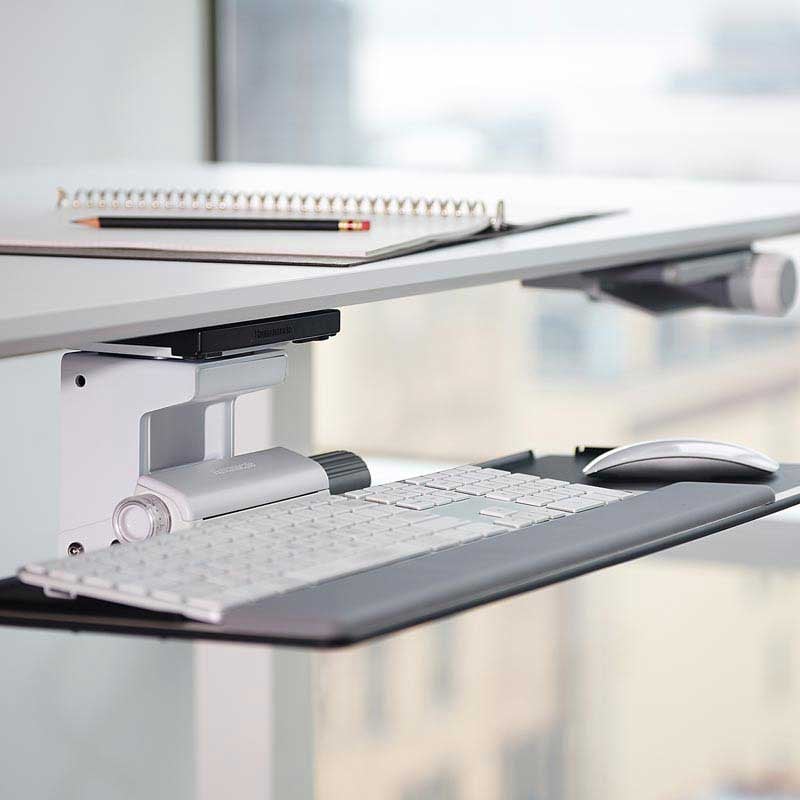
Keyboard Tray
Carpal Tunnel surgery is the #2 musculoskeletal surgery performed each year, only second to back surgery. Having proper wrist alignment, meaning a well-positioned keyboard and an ergonomic mouse prevents strain on the wrist, arms, and shoulders. Not to mention, having a keyboard tray means you have one less thing on your desk and more room for fun activities!
Humanscale, a leader in ergonomic products, even allows you to customize your own keyboard tray to accommodate your individual needs.
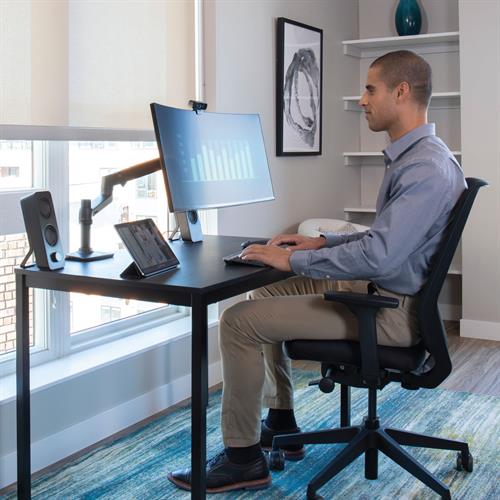
Monitor Arm
The most ergonomic position for your monitor to be at is eye level. Working on something like a laptop doesn’t allow you to easily adjust the height of your monitor and can lead to poor posture, neck fatigue, and overall discomfort. By using a monitor arm, you can adjust throughout the day to reduce eye strain, especially if the lighting in your office changes throughout the day.
Ergotron, a Haworth family partner, has endless options for monitor arm solutions… they even have one to support us laptop users!
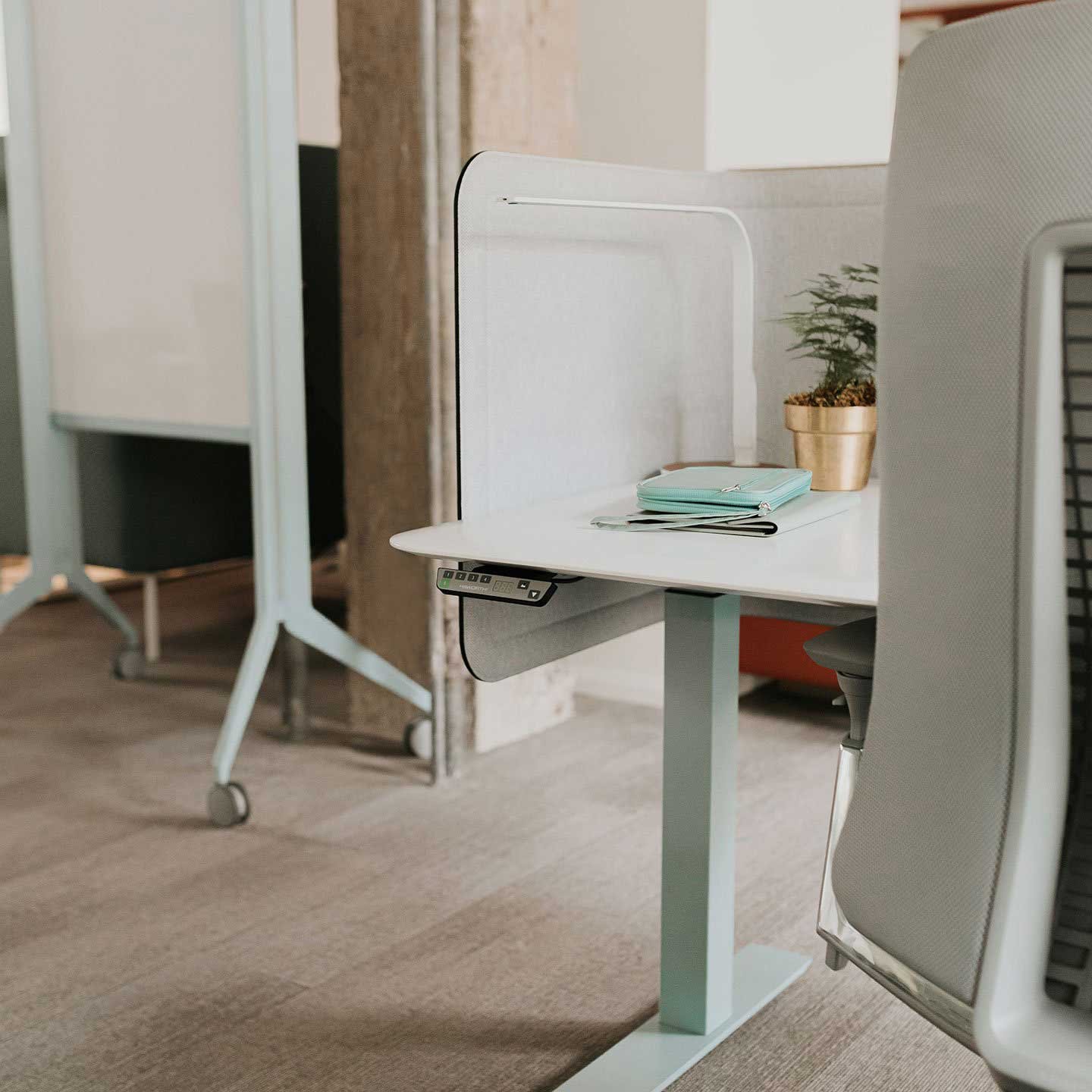
Proper lighting
Besides reducing eye strain, having the proper lighting in your workspace decreases the likelihood you’ll be bent over like a hobbit trying to see clearly. It’s also super helpful when you’re completing multiple tasks that may require more or less light… like selecting finish samples. ;)
The Pablo Lim360 provides full dim control and a 360-arm swivel. Plus, she’s cute.
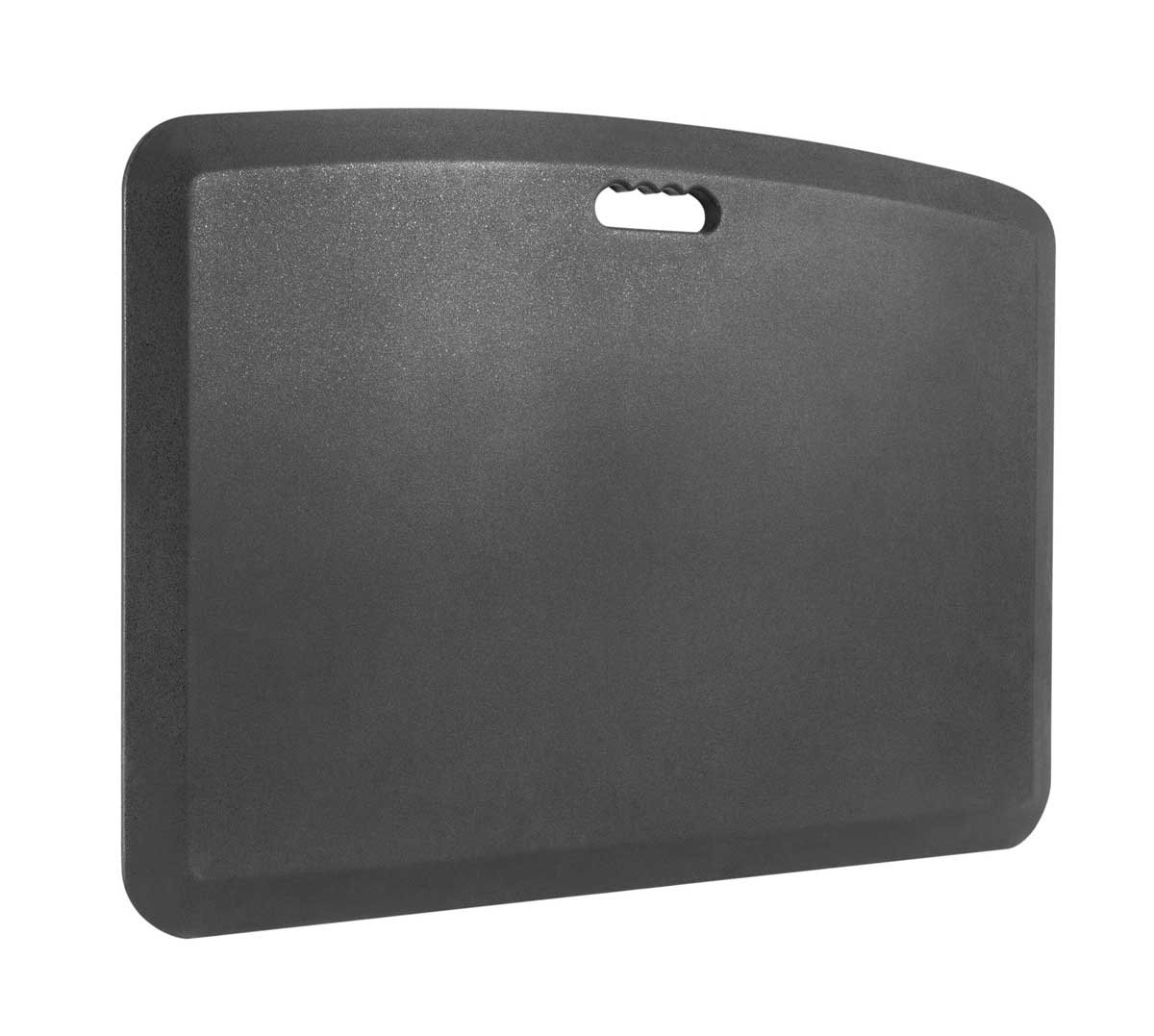
Soft Mat
As much as I love standing at my desk, there is no denying my little feet get tired. Studies show that using a comfort mat can reduce fatigue by 50%, which by now you can recognize means you’ll be able to stand longer and be even more productive! Additionally, using a soft mat promotes micromovements such as weight shifts, which will improve blood circulation.
The Winston mat, by HAT Collective, is a simple solution that can be an absolute game changer in your ergonomic workplace.
There is so much data out there showing that ergonomics in the workplace not only increases productivity but decreases costs spent on medical bills that can be avoided. It is our job as designers, furniture gurus, and thought leaders to promote an ergonomic culture within the workplace. That includes all of the above as well as encouraging daily movement, mental health practices, and overall well-being.
Contact us to learn more about how we can help you with your ergonomic workplace.





